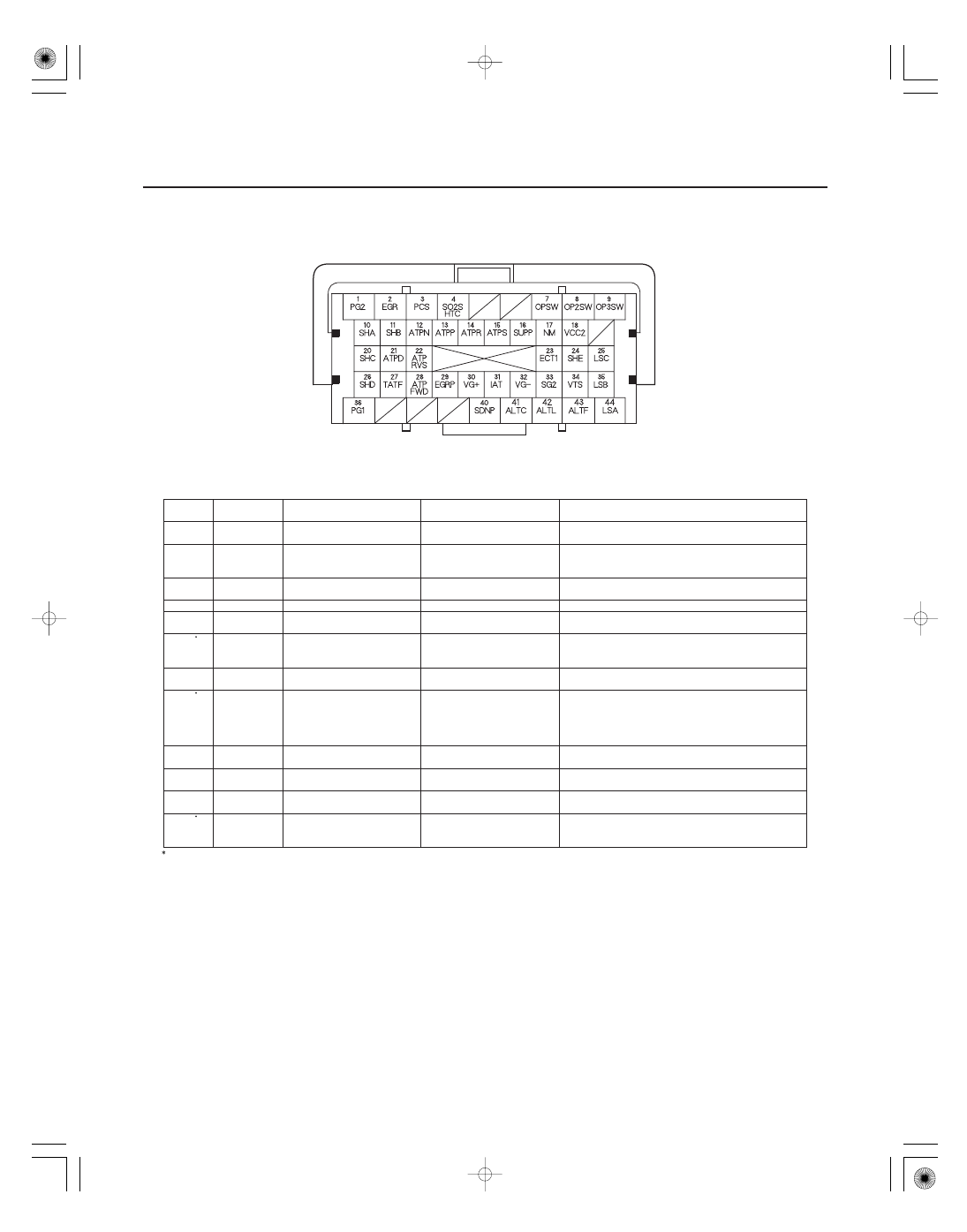Acura CSX. Manual - part 89

+
+
−
+
−
−
−
−
−
−
−
−
−
*08
△
ECM/PCM Inputs and Outputs at Connector B (
) (44P)
Terminal
number
Wire color
Terminal name
Description
Signal
11-30
Fuel and Emissions Systems
NOTE: Standard battery voltage is about 12 V.
•
•
30
RED/BLK
VG
(MASS AIR FLOW
(MAF) SENSOR
SIDE)
Detects MAF sensor signal
At idle: about 1.1
1.6 V
(between VG
terminal and VG
terminal)
31
RED/YEL
IAT (INTAKE AIR
TEMPERATURE (IAT)
SENSOR)
Detects IAT sensor signal
With ignition switch ON (II): about 0.1
4.0 V
(about 1.8 V at normal operating temperature)
32
BLK/BLU
VG
(MASS AIR FLOW
(MAF) SENSOR
SIDE)
Ground for MAF sensor
signal
33
GRN/BLK
SG2 (SENSOR GROUND)
Sensor ground
Less than 1.0 V at all times
34
GRN/YEL
VTS (ROCKER ARM OIL
CONTROL SOLENOID)
Drives rocker arm oil
control solenoid
At idle: about 0 V
35
BRN
LSB (A/T CLUTCH
PRESSURE CONTROL
SOLENOID VALVE B)
Drives A/T clutch pressure
control solenoid valve B
With ignition switch ON (II): current controlled
36
BLK
PG1 (POWER GROUND)
Ground circuit for ECM/
PCM
Less than 1.0 V at all times
40
BRN
SDNP (PADDLE SHIFTER
(DOWN SHIFT SWITCH))
Detects paddle shifter
(downshift switch) signal
In S:
With paddle shifter
(downshift switch) pressed:
about 0 V
With paddle shifter
(downshift switch) released:
about 5.0 V
41
WHT/GRN
ALTC (ALTERNATOR
CONTROL)
Sends alternator control
signal
With warmed up engine running: about 5.0 V
(depending on electrical load)
42
WHT/BLU
ALTL (ALTERNATOR L
SIGNAL)
Detects alternator L signal
With ignition switch ON (II): about 0 V
With engine running: battery voltage
43
WHT/RED
ALTF (ALTERNATOR FR
SIGNAL)
Detects alternator FR signal
With engine running: about 2.6
3.4 V
(depending on electrical load)
44
RED/BLK
LSA (A/T CLUTCH
PRESSURE CONTROL
SOLENOID VALVE A)
Drives A/T clutch pressure
control solenoid valve A
With ignition switch ON (II): current controlled
1: A/T
1
1
1
Terminal side of female terminals
08/08/21 14:12:44 61SNR030_110_0030